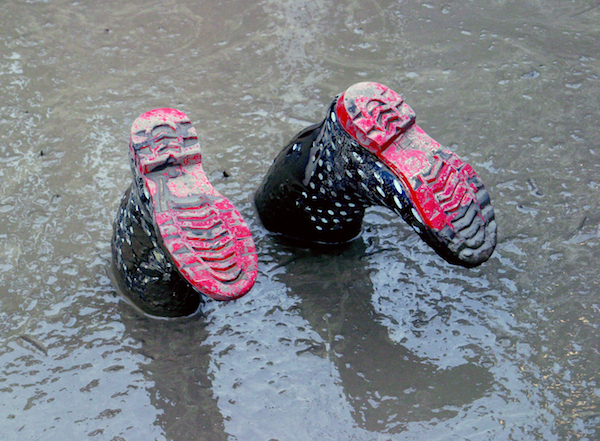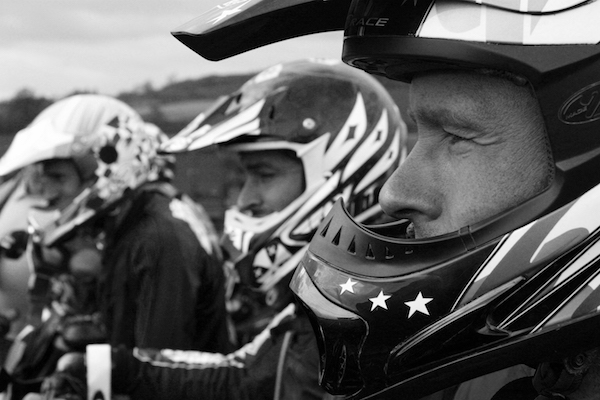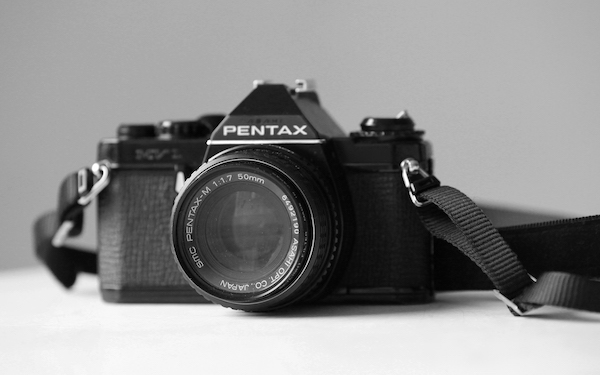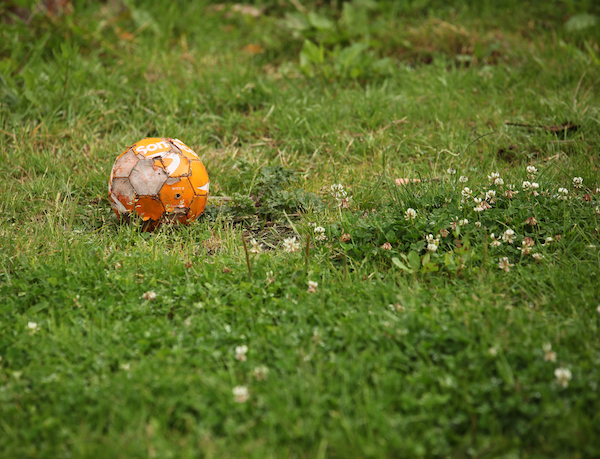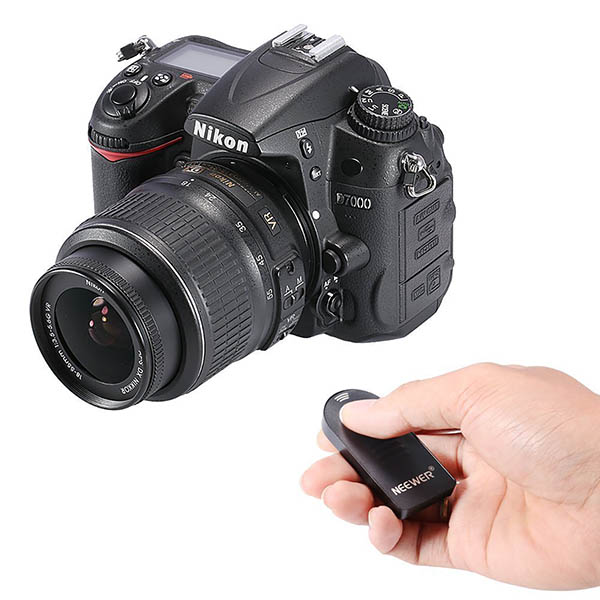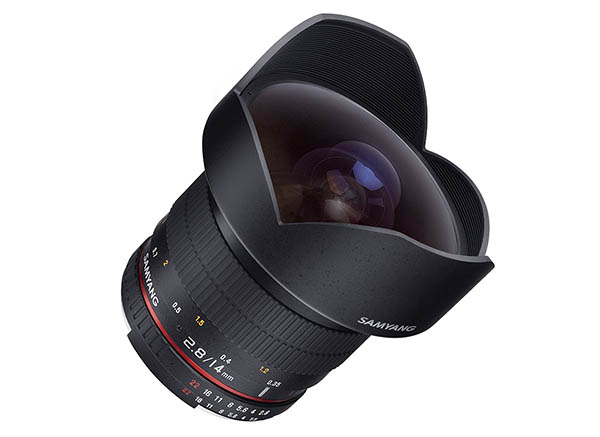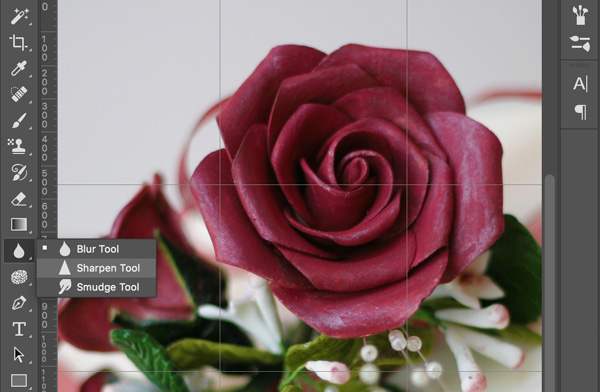Do you struggle to take sharp photos? You’re not alone. Keeping your subject in sharp focus is really important for achieving professional results. In this article, you’ll discover ten ways to get really sharp photos you can be proud to share.
1. Keep Your Camera Still
For static subjects, like portraits or landscapes, you should keep your camera as still as possible while shooting. Unintentionally moving the camera while taking the photo introduces blur, also known as camera-shake. This makes everything blurry, not just the subject or background. Ideally, use a tripod for maximum stability and steadiness.
2. Focus On The Subject
It sounds obvious, but to get sharp photos you need to ensure your camera is focusing on your subject and nowhere else! The good news is that your camera can help you using one of its Auto Focus modes.
2.1 Auto Focus Modes (AF Modes)
By default, your camera tries to focus automatically – but it is easily confused. If you’re shooting a portrait and your subject’s body isn’t roughly central in the frame, the camera might not realize this person is your subject. Instead, it will likely focus on the background.
Your camera has a number of Auto Focus points (AF points) which it uses to check for the presence of a subject. These are visible in the optical viewfinder or electronic viewfinder (EVF). You can choose any single AF point you like or a preset group of AF points. E.g. a group of AF points clustered around the center of the frame, or all AF points. Consult your camera user manual to find out how to choose AF points.
2.2 Single Focus Mode
This auto-focus mode is often labeled “AF-S” (by Nikon) or “One Shot AF” (by Canon). It uses whichever single AF point you’ve selected (or the default AF point) and looks for a subject at that point to focus on. It will keep “hunting” for focus until you take the photo.
Looking through your camera’s viewfinder, line the subject up behind the selected AF point. Then half-press the shutter button (or press the dedicated AF button if available) – which locks focus. Next, optionally reframe the photo without releasing the shutter button. Finally, fully press the shutter button to take the photo.
2.3 Continuous/AI Servo Focus Mode
This AF mode, labeled “Continuous/AF-C” (by Nikon), or “AI Servo” (by Canon), works best for moving subjects. To use this mode, you simply half-press the shutter button (or fully press the dedicated AF button if available). Your camera will then track the subject(s) moving around the scene and try to keep the subject(s) in focus. It even works if you move your camera, or if the distance between your camera and subject changes.
2.4 Single/Continuous Hybrid Focus Mode
This AF mode offers the best of both worlds, switching between Single Focus Mode and Continuous Focus Mode automatically. The mode it chooses depends on whether or not the subject appears to be moving. This is a good general-purpose AF mode if your subjects are varied or you’re unsure which AF mode to use. The dog in the photo below couldn’t decide whether to walk or stop and sniff the ground, so this AF mode was perfect.
2.5 Manual Focus Mode (MF Mode)
Cameras aren’t foolproof, and some subjects can be particularly tricky for the camera to focus on. These subjects include low-focus subjects, or any subject in low light. So, to get sharp photos, sometimes it’s best not to rely on the camera’s AF modes, and to set the focus yourself. Typically, when your subject is stationary, focusing manually is a good option. Such scenarios include landscapes and macro photography.
You can select MF mode using a switch on the barrel of the lens (switch it from AF to M). If it’s not available on your lens, it’ll be in your camera’s settings. Consult your camera’s user guide to find out how it’s done on your camera.
2.6 How Aperture Affects What’s In Focus
Achieving good focus is only half of the battle when it comes to sharp photos. You also need enough of your subject, from front-to-back, to be in sharp focus. For example, getting perfect focus on the eyes of your portrait sitter is important, but an out-of-focus nose ruins the portrait.
How much of a scene is in acceptable focus, from front-to-back is called Depth Of Field, or DoF.
A large DoF means that, as well as the focal point, more of the foreground and background will be in focus.
A small DoF means that very little of the foreground and background will be in focus.
Depth of field can be controlled by setting the Aperture to a suitable value. A large aperture size produces a shallow depth of field where only the subject is in focus. A small aperture size creates a large depth of field, where some or all of the foreground and background is in focus, as well as the subject.
2.7 Depth Of Field Preview
When your camera shows what it’s going to capture in its viewfinder or on its display, it usually opens the aperture up to its maximum size. This is useful because it means you get the brightest possible view which helps you compose and frame your shot. As soon as you press the shutter button the camera “stops down” the aperture to the chosen size. It’s only after you take the shot that you get to see how the aperture setting affects how the scene is captured.
Most DSLR (and some mirrorless) cameras offer a depth of field preview option. On most DSLR cameras it’s activated using a button on the camera body. Consult your camera’s user guide to find it. When you activate the depth of field preview, the aperture size changes to the chosen size for as long as you keep the button pressed down. This is your opportunity to check whether there’ll be enough depth of field for your subject. Note, the scene will be darker (unless your chosen aperture size is your camera lens’ maximum aperture size, in which case you’ll see no difference).
Other mirrorless cameras usually have an Electronic Viewfinder (EVF) rather than an optical viewfinder (some have both, however). These cameras are capable of showing the effective depth-of-field in real-time within the EVF.
2.8 Don’t Change Camera-To-Subject Distance After Focusing
Once you’ve set your focus, by half-pressing the shutter button, or in Manual Focus mode, by adjusting the lens’ focusing ring, it’s important that the distance between your camera and your subject doesn’t change. So, if you take a step forward or backward after focusing, or your subject does, then your subject won’t be in sharp focus. If this happens, you’ll need to release the shutter button, and re-focus.
3. Use A Fast Shutter Speed
If you or your subject moves while the camera is capturing the scene, you won’t get sharp photos – just blurry shots. The longer or slower your shutter speed, the more time there is for you or your subject to move, so the blur and lack of sharpness will be even worse.
To reduce the chance of blur caused by camera or subject movement, choose the fastest shutter speed available to you. You can do this by shooting in Shutter Priority mode (TV or S mode) and selecting a fast shutter speed, or in the other semi-automatic modes (such as Aperture Priority mode or Program mode) check the shutter speed value – and make adjustments to the aperture value until the shutter speed value is high enough.
To reduce the effects of camera movement for hand-held shots, the rule of thumb is to choose a shutter speed which is at least “1 over the focal length,” e.g. for a focal length of 55mm, you need the next available shutter speed after 1/55s – which will be 1/60s. Ideally, you’ll want to go higher than this.
If your subject is moving, you’ll need to choose an even faster shutter speed.
As with all “rules”, there are exceptions. There are many situations where you can get sharp photos with slower shutter speeds. Here are two examples.
3.1 Stationary Subjects
If your subject is completely stationary, and your camera is mounted on a tripod, then the full range of shutter speeds is at your disposal. Being able to use any shutter speed gives you greater flexibility about which aperture value you use – so you get better control over depth of field.
3.2 Intentional Blur
If you are deliberately trying to capture some movement in the scene – such as star trails across a night sky, or vehicle light trails at night, or the water veiling effect with waterfalls, rivers or the sea – then you’ll need a much slower shutter speed. So long as your camera is mounted securely on a tripod, your intentional motion blur will be emphasized and intensified by the presence of sharply focused elements within the scene.
4. Use The Right ISO Setting
There are two schools of thought regarding ISO when it comes to getting sharp photos.
4.1 Use A High ISO Value
One theory is that you should use a higher ISO value because this lets you use a faster shutter speed. This reduces motion blur caused by the subject or camera (or both) moving while the photo is being taken. Unfortunately, the price you pay for higher ISO values is an increased amount of “noise” or “grain”. Confusingly, grain can actually make an image look sharper. However, areas that don’t need to be sharp, like large areas of color with no detail, a person’s skin, a featureless sky, and even areas of the scene which are out of focus, also end up grainy, which is usually undesirable.
4.2 Use A Low ISO Value
The other theory is that using a low ISO value (at the expense of a fast shutter speed) gives sharper results. This is because non-detailed areas of the scene will be smoother and cleaner, emphasizing and intensifying the sharpness of the more detailed areas. When using a tripod, always use a low ISO value, since you don’t need to sacrifice image quality (due to excessive noise/grain) to get a usable shutter speed.
Feel free to experiment with both approaches – but you should prioritize a low ISO value over a high one if you’re able to get a shutter speed and aperture size which works – especially when using a tripod. That said, modern cameras are becoming increasingly good at producing fantastic results at high ISO values, with minimal noise or grain, so don’t be afraid to use higher ISO values when you need to.
5. Find Your Lens’ “Sweet Spot”
Lenses tend not to perform equally well throughout their aperture range. Indeed, they have a “sweet spot” – an aperture setting where the best sharpness is achieved. As a rule-of-thumb, this is 2 f-stops (or steps) above the maximum available aperture value. So, if the lens you’re using offers a maximum of f/5.6, then jumping two f-stops to f/11 (skipping f/8), will give sharp photos.
6. Use Remote Shutter Release Or Timer
When you press your camera’s shutter button, the camera dutifully responds immediately. Unfortunately, tiny vibrations or movement of the camera, caused by your finger or hands touching the camera, will create unwanted blur and lack of sharpness rather than sharp photos. The trick here is to trigger the camera’s shutter button without actually touching the camera at all. There are two main ways to do this. One is to use your camera’s built-in timer feature. Usually, it’s three or ten seconds, which is plenty of time for any vibrations or movement to have stopped. The second is to use a remote shutter release in the form of a cable attached to your camera, with a button at the other end, or a wireless shutter release button.
7. Use Mirror Lock-Up
DSLR cameras have a mirror which sits in between the lens mount and the camera’s sensor. It reflects the light coming into the camera, redirecting it so travels to the camera’s optical viewfinder. In order for a photo to be captured, your camera flips the mirror out of the way temporarily. It does this automatically and in the blink of an eye. But the weight and speed of the mirror can cause camera vibration. This often results in blurry photos, particularly when using longer telephoto lenses.
To eliminate the effect of the moving mirror, many DSLR cameras allow you to lock the mirror up well before the photo is taken. This means no camera vibration, resulting in sharp photos.
8. Use Image Stabilization
If you don’t have a tripod and you’re having to hand-hold the camera, switch Image Stabilization on. This will help compensate for small movements of the camera whilst shooting. Many camera lenses provide Image Stabilization. Some mirror cameras have stabilization built into the camera body rather than the lens. It works by automatically moving the sensor to compensate for any camera movements.
To turn image stabilization on, look for an on/off switch on the lens barrel. Otherwise, it’ll be an option in the camera’s menu settings.
9. Make Sure Your Lens Is Clean
It seems like a trivial point, but a dirty lens will result in softer photos. Lens cleaning kits are cheap and available both online and in any camera store. Blow away any loose dust or dirt before attempting to wipe the lens. Always use a lint-free cloth on the lens as this reduces the chance of scratching the lens.
10. Sharpen In Post-Processing
In most cases, it helps to add some sharpening in your favorite photo editing app. This is because cameras don’t generally apply too much sharpening to their JPEGS (and never to the RAW images). Remember not to overdo the sharpening because too much sharpness can introduce grain and unwanted artifacts. No amount of sharpening can fix an overly-blurry photo.
How To Get Sharp Photos: Conclusion
You’ve discovered that a faster shutter speed helps to keep moving subjects in sharp focus, or compensates for camera-shake. You now know that front-to-back sharpness is controlled by the aperture size. A smaller aperture means more of the foreground and background will be in focus. A larger aperture means less of the foreground and background will be in focus. You also know to use a tripod for best results when shooting stationary subjects. And that, even with a tripod, camera-shake can be eliminated using your camera’s timer or a remote shutter release.



